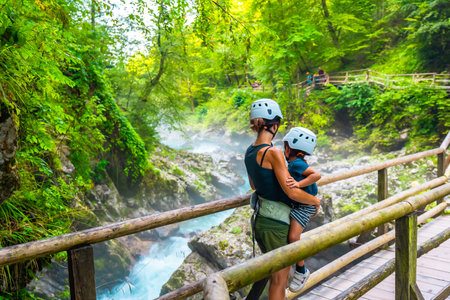The Power of Nature in Building Family Bonds
There’s something truly magical about stepping outside with your loved ones and immersing yourselves in the wonders of nature. Whether it’s a weekend camping trip, a hike through the woods, or simply playing in the backyard, outdoor adventures offer families unique opportunities to connect on a deeper level. Research consistently shows that spending time outdoors isn’t just good for our physical health—it also strengthens family relationships and nurtures emotional well-being. According to studies published by the American Psychological Association, shared outdoor experiences can reduce stress, boost mood, and foster open communication among family members. On a personal note, some of my most cherished memories growing up involved roasting marshmallows around a campfire with my parents and siblings. The laughter, storytelling, and moments of quiet reflection we shared outdoors created bonds that still hold strong today. When families unplug from screens and step into nature together, they make space for meaningful conversations and authentic connections. It’s these moments—walking side by side on a forest trail or gazing at the stars—that remind us how powerful and healing the natural world can be for strengthening family ties.
Choosing the Right Outdoor Activities for Every Family
When it comes to planning outdoor adventures as a family, choosing the right activities is key to ensuring everyone has a memorable and enjoyable experience. Every family is unique, with different age groups, interests, and comfort levels with nature. Whether you’re adventuring with toddlers, teens, or grandparents, it’s possible to find something that brings everyone together and creates those deeper connections you’re looking for.
Tips for Finding the Perfect Fit
Start by having an open conversation about what each family member enjoys and what new experiences they might be willing to try. Consider your group’s physical abilities and preferences—some may love a challenging hike, while others might prefer something more relaxed. Don’t forget to factor in the local weather and season; sometimes a simple afternoon at a nearby park can be just as rewarding as a weekend camping trip.
Outdoor Adventure Options by Age & Interest
| Age Group/Interest | Easy | Moderate | Adventurous |
|---|---|---|---|
| Toddlers & Preschoolers | Nature walks, scavenger hunts in parks | Pond dipping, short flat hikes | Pony rides at ranches/farms |
| Grade-School Kids | Biking on paved trails, birdwatching | Canoeing on calm lakes, moderate hikes | Ziplining (with supervision) |
| Teens & Adults | Photography walks, geocaching | Kajakking, mountain biking on trails | Overnight backpacking trips, rock climbing |
| All Ages Together | Picnics in state parks, stargazing nights | Tent camping weekends, fishing trips | Paddleboarding or rafting (with guides) |
Flexible Planning Makes All the Difference
The best adventures often come from being open to trying new things and adapting plans as needed. If someone isn’t comfortable with one activity, have a backup ready—maybe switch a long hike for a shorter walk with more stops to explore. The goal is connection and shared joy, not checking off a list of “must-dos.” Remember: sometimes the simplest outings end up creating the most cherished memories.

3. Planning and Prepping for Stress-Free Outings
Every memorable outdoor family adventure starts with thoughtful planning and a dash of flexibility. Preparation not only sets the stage for fun, but it also ensures everyone’s safety and comfort. Here are some practical tips to help your family get ready for nature-filled outings that build lasting connections.
Packing Essentials: What Every Family Needs
No matter where you’re headed—be it a local hiking trail or a weekend camping trip—having the right gear makes all the difference. Start with the basics: comfortable shoes, weather-appropriate clothing, sun protection (think hats, sunglasses, and sunscreen), bug spray, and plenty of water bottles. Don’t forget a well-stocked first aid kit for unexpected scrapes or stings. For younger kids, pack extra snacks, wipes, and maybe a favorite toy or two to keep them happy on the go.
Meal Ideas That Travel Well
Food is at the heart of any great family outing. Choose meals and snacks that are easy to prepare, pack, and eat outdoors. Sandwiches, wraps, fruit, trail mix, granola bars, and cut veggies are always crowd-pleasers. If you’re planning to cook over a campfire or grill, prep ingredients at home to minimize hassle later. Remember to bring reusable containers and trash bags to help keep nature clean—it’s all part of teaching kids respect for our environment.
Create a Flexible Itinerary
While having a plan helps things run smoothly, leaving room for spontaneity allows magic to happen. Research your destination ahead of time: check trail maps, park rules, restrooms, and emergency contacts. Build in extra time for breaks or detours—sometimes the best memories come from unexpected discoveries along the way. By balancing structure with flexibility, you’ll set your family up for stress-free adventures where everyone can fully enjoy being together in the great outdoors.
Embracing Teachable Moments in Nature
One of the most rewarding aspects of outdoor adventures as a family is the abundance of teachable moments that naturally unfold. When we step outside together—whether it’s hiking, camping, or exploring a local park—we open the door to lessons that go far beyond textbooks. Nature offers a dynamic classroom where kids and adults alike can grow through shared experiences, all while building deeper connections with each other.
Learning Through Teamwork
Outdoor activities often require cooperation and communication. Setting up a tent, navigating trails, or preparing meals at a campsite gives everyone a chance to contribute. Kids learn firsthand how their actions impact the group and why working together matters. For example, assigning roles during a camping trip helps children understand responsibility and collaboration. Here’s a simple breakdown:
| Activity | Skills Developed | Family Roles |
|---|---|---|
| Setting Up Camp | Teamwork, Problem-solving | Tent builder, Gear organizer, Fire starter |
| Trail Navigation | Communication, Leadership | Map reader, Trail spotter, Snack carrier |
| Cooking Outdoors | Responsibility, Planning | Chef, Sous-chef, Cleanup crew |
Building Resilience Together
Navigating unexpected weather, managing fatigue on a long hike, or adapting to new environments are real-life challenges that foster resilience. These moments offer families the chance to model perseverance and positive attitudes when things don’t go as planned. Kids quickly pick up on how parents handle obstacles—and these experiences build their own confidence and grit.
Cultivating Environmental Stewardship
Exploring nature as a family is also an opportunity to instill respect for the environment. Simple actions like picking up litter, staying on marked trails, or observing wildlife from a distance teach kids about caring for the planet. Talk openly about why these habits matter—not just for your family’s adventure today but for future generations as well.
Making Every Moment Count
The beauty of outdoor adventures lies in their unpredictability and richness. Each experience—big or small—can spark curiosity and growth if we stay present and engaged. By embracing these teachable moments, families not only create lasting memories but also nurture values that will serve everyone well beyond the trailhead.
5. Creating Lasting Memories with Family Traditions
Building strong family connections often comes from sharing meaningful experiences, and there’s nothing quite like the great outdoors to create lasting memories. By establishing traditions around outdoor adventures, families can nurture a sense of togetherness that lasts a lifetime.
Start Annual Camping Trips
One way to make your family’s time in nature special is by starting an annual camping trip. Choose a favorite national park or scenic state campground, and return year after year. Over time, these trips become more than just vacations—they become cherished milestones where everyone looks forward to unplugging, sharing stories around the campfire, and enjoying s’mores under the stars.
Collect Keepsakes from Each Adventure
Another meaningful tradition is collecting small keepsakes from each outing. Whether it’s pinecones, unique rocks, or patches from different parks, gathering these mementos together can create a tangible history of your family’s adventures. Displaying them in a shadow box or creating a scrapbook lets everyone relive those special moments again and again.
Create Personalized Rituals
Personal rituals can also deepen the bonds formed during outdoor activities. Maybe your family enjoys a sunrise hike on the last morning of every trip, or you always cook pancakes over the camp stove. These little routines give everyone something to look forward to and help strengthen your collective identity.
Share Stories and Reflect Together
At the end of each adventure, take time to share stories and reflect on what made this trip unique. Encourage everyone to talk about their favorite sights, funny mishaps, or new skills learned. These conversations help reinforce positive memories and foster gratitude for your shared experiences.
By weaving these traditions into your outdoor adventures, you’re not just exploring nature—you’re building a family legacy filled with connection, laughter, and love that will be remembered for generations.
Inclusive Adventures: Making Nature Accessible for Everyone
Outdoor adventures have the power to strengthen family bonds, but true connection happens when everyone feels welcome and included. America’s diverse families deserve to explore nature together—regardless of ability, background, or family size. To foster deeper connections, we must intentionally create experiences that are accessible and enjoyable for all.
Choose Family-Friendly Trails and Parks
Start by seeking out parks and trails that offer accessible paths, sensory-friendly environments, and clear signage. Many national and state parks now feature wheelchair-accessible trails, paved walkways for strollers, and adaptive equipment rentals. Before heading out, check online resources or call park offices to ask about accessibility features and amenities like restrooms, picnic areas, and parking.
Adapt Activities for All Abilities
Outdoor fun isn’t one-size-fits-all. Bring along gear such as adaptive bikes or mobility aids if needed, and choose activities that can be tailored—like scavenger hunts with visual clues or birdwatching from a comfortable bench. Invite each family member to participate in ways that suit their strengths. Remember, sometimes the best memories come from simply being present together in nature.
Cultivate an Inclusive Mindset
Model open-mindedness and empathy by encouraging your kids to appreciate everyone’s unique abilities and backgrounds. Talk about how different cultures interact with the outdoors, try new foods on your picnics, and learn about local history or indigenous traditions tied to the land you’re exploring. When we embrace differences with curiosity and respect, our family adventures become richer.
Plan for Comfort and Safety
Packing thoughtfully makes a world of difference. Bring plenty of water, snacks for various dietary needs, sunscreen, extra layers for changing weather, and any medical supplies required by family members. Make sure everyone knows what to expect—review the route together and set realistic goals so nobody feels left behind.
Celebrate Every Experience
No matter how big or small your outdoor adventure is, celebrate it as a win. Take time at the end of your day to share what each person enjoyed most or found challenging. These reflections not only build confidence but also help families grow closer through shared experience. By making nature inclusive for everyone, we honor each other—and deepen our connections in the great outdoors.

